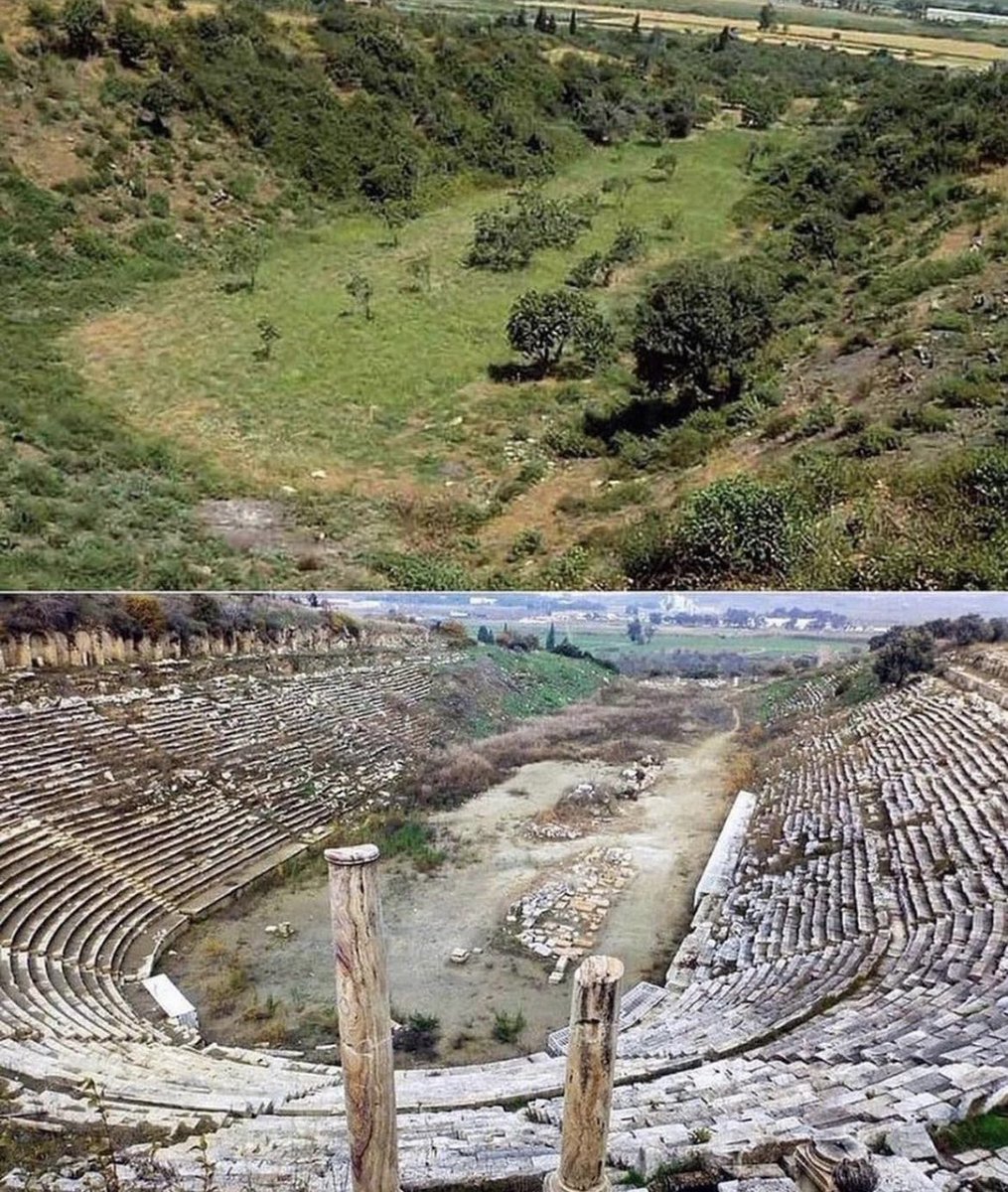[GUEST ACCESS MODE: Data is scrambled or limited to provide examples. Make requests using your API key to unlock full data. Check https://lunarcrush.ai/auth for authentication information.]  Historic Vids [@historyinmemes](/creator/twitter/historyinmemes) on x 5.5M followers Created: 2023-11-03 21:47:04 UTC Before and After Excavation of an Ancient Stadium in Modern-Day Turkey: 1984 vs. Today This is the Stadium of Magnesia ad Maendrum in the ancient city, located in modern-day Aydin/Germencik, Turkey. Originally founded by Alexander the Great, Magnesia underwent various changes in leadership by the Diadochi, who were the competing generals, families, and allies of Alexander the Great, vying for control of his empire after his passing. Magnesia reached its cultural zenith during the rule of the Pergamum kingdom in the 2nd century BC and is mentioned in the writings of notable historians such as Herodotus, Diodorus Siculus, and Pausanias. Following XXX B.C., the city came under Roman dominion. In XXX B.C., Magnesia was officially bequeathed to the Roman Empire. Unfortunately, in XX A.D., the city suffered a devastating earthquake, leading to its reconstruction under the Roman Emperor Tiberius. By XXX A.D., an early Christian community had taken root in Magnesia. Subsequently, in XXX A.D., the city faced conquest and plunder by the Goths, which inflicted irreparable damage. Reduced to little more than a Byzantine border fortress, the city faced further decline due to floods, epidemics, and other plagues. Over time, its population dwindled, and Magnesia was gradually abandoned. Through extensive excavation efforts conducted by French, German, and British scholars in Asia Minor, Magnesia was rediscovered. The Berlin museums led initial excavations between 1891 and 1893. Unfortunately, after the first campaign in 1893, these endeavors were halted for nearly a century until 1984. In 1984 (top picture), one could merely speculate about the existence of a stadium within the horseshoe-shaped depression in the eastern section of the former city area. Subsequent excavation work on the stadium began in 2004, requiring the removal of vast quantities of sand and clay to unveil the remarkable stadium structures visible today (bottom picture). The stadium built in the 1st century A.D. offered space for about XXXXXX spectators. It was the venue for running competitions, horse races, boxing fights and, in the Roman Empire, possibly gladiator games in honour of the Emperor and the city goddess Artemis.  XXXXXXXXX engagements  **Related Topics** [turkey](/topic/turkey) [Post Link](https://x.com/historyinmemes/status/1720558235608850740)
[GUEST ACCESS MODE: Data is scrambled or limited to provide examples. Make requests using your API key to unlock full data. Check https://lunarcrush.ai/auth for authentication information.]
 Historic Vids @historyinmemes on x 5.5M followers
Created: 2023-11-03 21:47:04 UTC
Historic Vids @historyinmemes on x 5.5M followers
Created: 2023-11-03 21:47:04 UTC
Before and After Excavation of an Ancient Stadium in Modern-Day Turkey: 1984 vs. Today
This is the Stadium of Magnesia ad Maendrum in the ancient city, located in modern-day Aydin/Germencik, Turkey. Originally founded by Alexander the Great, Magnesia underwent various changes in leadership by the Diadochi, who were the competing generals, families, and allies of Alexander the Great, vying for control of his empire after his passing.
Magnesia reached its cultural zenith during the rule of the Pergamum kingdom in the 2nd century BC and is mentioned in the writings of notable historians such as Herodotus, Diodorus Siculus, and Pausanias. Following XXX B.C., the city came under Roman dominion.
In XXX B.C., Magnesia was officially bequeathed to the Roman Empire. Unfortunately, in XX A.D., the city suffered a devastating earthquake, leading to its reconstruction under the Roman Emperor Tiberius.
By XXX A.D., an early Christian community had taken root in Magnesia. Subsequently, in XXX A.D., the city faced conquest and plunder by the Goths, which inflicted irreparable damage. Reduced to little more than a Byzantine border fortress, the city faced further decline due to floods, epidemics, and other plagues. Over time, its population dwindled, and Magnesia was gradually abandoned.
Through extensive excavation efforts conducted by French, German, and British scholars in Asia Minor, Magnesia was rediscovered. The Berlin museums led initial excavations between 1891 and 1893. Unfortunately, after the first campaign in 1893, these endeavors were halted for nearly a century until 1984.
In 1984 (top picture), one could merely speculate about the existence of a stadium within the horseshoe-shaped depression in the eastern section of the former city area. Subsequent excavation work on the stadium began in 2004, requiring the removal of vast quantities of sand and clay to unveil the remarkable stadium structures visible today (bottom picture).
The stadium built in the 1st century A.D. offered space for about XXXXXX spectators. It was the venue for running competitions, horse races, boxing fights and, in the Roman Empire, possibly gladiator games in honour of the Emperor and the city goddess Artemis.

XXXXXXXXX engagements
Related Topics turkey